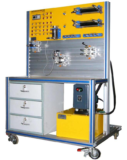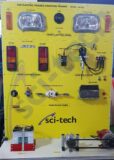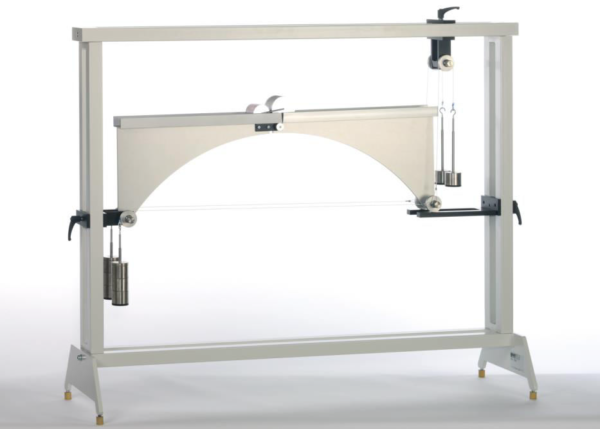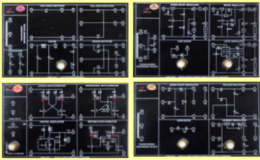Three Hinged Arch Model MT 043
Home » Products » Three Hinged Arch Model MT 043
Three Hinged Arch Model MT 043
Sci-tech Three Hinged Arch Model MT 043 includes two long arch segments and one short segment, of which two at a time are connected by a hinged joint producing a symmetrical or unsymmetrical three-hinged arch. The arch under investigation can be subjected to point, distributed or moving load. Weight sets compensate for the support reactions of a abutment hinge, so enabling a comparison between calculated and actual measured values. All the component elements of the experiment are clearly laid-out and housed securely in a storage system. The complete experimental set-up is arranged in the frame.
| Size: | 110cm x 50cm x 95cm (LxWxH) |
| Weight: | 15 kg |
Item Description
Features
* Statically determinate three-hinged arch1
* Symmetrical or unsymmetrical arch1
* Various load cases: point load, distributed load, moving load
Bridges are often constructed as three-hinged arches. This type of construction is particularly suitable when compression-proof building materials are available. Horizontal thrust occurs in the arch at the supports. It permits much lower bending moments in the arch than in the case of a beam on two supports with the same span. A significant longitudinal compressive force is active in the arch to produce this effect.
A three-hinged arch consists of a curved beam mounted on two fixed supports, and usually featuring the so-called crown hinge at its crown. The hinges on the two fixed supports absorb vertical and horizontal forces, and are known as abutment hinges. Their connecting line is the springing line. The crown hinge renders the system statically determinate.
Sci-tech Three Hinged Arch Model MT 043 includes two long arch segments and one short segment, of which two at a time are connected by a hinged joint producing a symmetrical or unsymmetrical three-hinged arch. The arch under investigation can be subjected to point, distributed or moving load. Weight sets compensate for the support reactions of a abutment hinge, so enabling a comparison between calculated and actual measured values.
All the component elements of the experiment are clearly laid-out and housed securely in a storage system. The complete experimental set-up is arranged in the frame.
The well-structured instructional material sets out the fundamentals and provides a step-by-step guide through the experiments.
See also different:

Sci-tech Fundamentals of Hydraulics Trainer Set Up Model HT 011 is designed to meet the requirements for learning complex inner dynamic structure and working principle of hydraulic components. The structure of hydraulic component is designed a [...]

Sci-tech Car Electric Trouble Shooting Trainer Model AM 033 have the main components of the car electric system fixed together on a board and can be operated on 12V means of a transformer-rectifier unit (220V/12V) System is mounted on M.S. Str [...]


